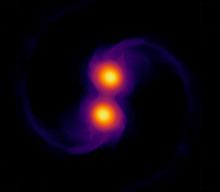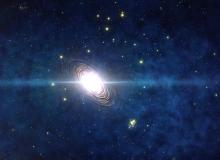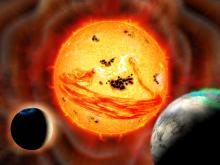Listen to today's episode of StarDate on the web the same day it airs in high-quality streaming audio without any extra ads or announcements. Choose a $8 one-month pass, or listen every day for a year for just $30.
You are here
Missing Stars
Some of the stars may be missing. And one project is trying to find out what happened to them, while also finding more stars that have suddenly vanished or appeared.
VASCO compares large surveys of the sky that were conducted decades apart.
The earliest was compiled at Palomar Observatory in California in the 1950s. The survey was done with photographic plates, which have since been digitized.
More-recent surveys use electronic detectors, which can see fainter objects. So anything that showed up on the Palomar plates should also show up in the later observations.
VASCO has turned up quite a few objects in the early pictures that don’t show up today. Researchers have ruled out flaws in the original plates and many other possible explanations. They’re left with the idea that these objects have simply vanished.
And that’s hard to explain. Stars change slowly, so most changes in brightness are gradual. Some do change over short periods, but modern surveys should easily see any variable stars that were on the original plates.\
Some stars could vanish — massive stars that collapse to form black holes without blasting away their outer layers. But such events are quite rare, so they can’t account for the missing stars.
Researchers say it’s possible that the disappearing stars were lasers beamed into space by other civilizations. But it’s more likely that they’re seeing an undiscovered natural way that stars might go missing.
Script by Damond Benningfield





